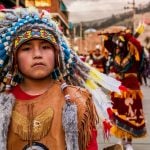American Indian Place Names in Glacier National Park
Since there is going to be a meet up in Glacier Park in June, I thought it might be interesting to do a tour of the park from west to east along today’s traditional tourist trail, commenting on some of the Indian names and heritage along the way. As with many national parks, the names of many of the mountains, creeks, and lakes have been changed to reflect the egos of the conquerors and the traditional Indian names are often ignored.
Kalispell:
We are going to start our tour in Kalispell, the closest city to the park. Kalispell was named for the Kalispel Indians who currently have a reservation in eastern Washington. The designation “Kalispel” refers to camas, an important food plant, and we might translate this as “camas eater.”
Belton:


The original name of the town at the west entrance to the park was Belton (notice that the sign on the railroad station still says Belton) and it was changed to West Glacier in 1949. The Kootenai call the Belton Hills “Spotted Foot Mountains.”
Flathead River:

We enter Glacier National Park by crossing over the Middle Fork of the Flathead River. Two of the park’s boundaries are formed by the North Fork of the Flathead River and the Middle Fork of the Flathead River. The river is named for the Bitterroot Salish who are also known as the Flathead.
Lake McDonald:

Shortly after entering the park (stopping at the entrance stand to pay the fee or show a park pass), we come to Lake McDonald which was probably named after Duncan McDonald, the son of Hudson’s Bay Company trader Angus MacDonald who founded Fort Conah (now on the Flathead Indian Reservation) and Catherine Baptiste (Eagle in the Wind) whose heritage was Nez Perce, Mohawk, and French.

The foot of Lake McDonald had traditionally been used by the Kootenai as a ceremonial site and thus the Kootenai name for the lake and the area around it seems to have been “good place to dance” or “where people dance.” This is sometimes indicated as “sacred dancing.”

There is an oral tradition which tells of a time when a Kalispel band was camped at the foot of the lake when they were attacked by a Sixika (North Blackfoot) band.
Upper McDonald Creek, which flows into the lake, was called Barrier Creek by the Kootenai.
Avalanche:

Within Glacier Park, a creek, a lake, and a campground all carry the name Avalanche. Long before this area was part of a national park it was used by the Kootenai who hunted in the area. They designated it as Beaver Head (lake, creek, and basin). They also have creation stories about this area and conducted ceremonies here.

Logan Pass:

Located at the top of the Going to the Sun Road, Logan Pass today is a very popular tourist stop that offers spectacular views of the mountains as well as opportunities to see mountain goats and marmots. The pass is named for William Logan, the first superintendent of the park. While he had previously been the Indian agent for the Blackfeet Reservation and for the Fort Belnap Reservation (Gros Ventre and Assiniboine tribes), he was not known for his empathy for Indians.
For thousands of years, Indian people had used this pass in crossing the Rocky Mountains. The Blackfoot, whose traditional homelands lie just to the east of the mountains, call it the Ancient Road. The Kootenai, whose traditional home is just to the west of the mountains, would cross through this pass on snowshoes in the wintertime. The Kootenai called it the trail “where packs are pulled up in a line.”
St. Mary Lake:

Leaving Logan Pass and driving down the east side of the mountains on the Going to the Sun Road you will come to St. Mary Lake. The origin of the English designation “St. Mary” is somewhat controversial with lots of speculation about its origin. There are some who champion its origin with the Jesuit missionary Father DeSmet, who probably never saw the lake. Other missionaries, French Canadian métis, fur trappers, and many others have also been credited with naming the lake. However, for thousands of years prior to the European invasion and the arrival of the Jesuits, this was Blackfoot land. The Blackfoot referred to the lake as “inside big water” or “blue banks.” There are also some indications that it might have been called “many chiefs gathered” in reference to intertribal meetings in the area.
Other:
There are lots of other waterfalls and mountains which carry Indian names along the Going to the Sun Road. In addition, there are Indian names to many of the lakes, mountains, creeks, and other features in other parts of the park, but these are topics for further discussion.



